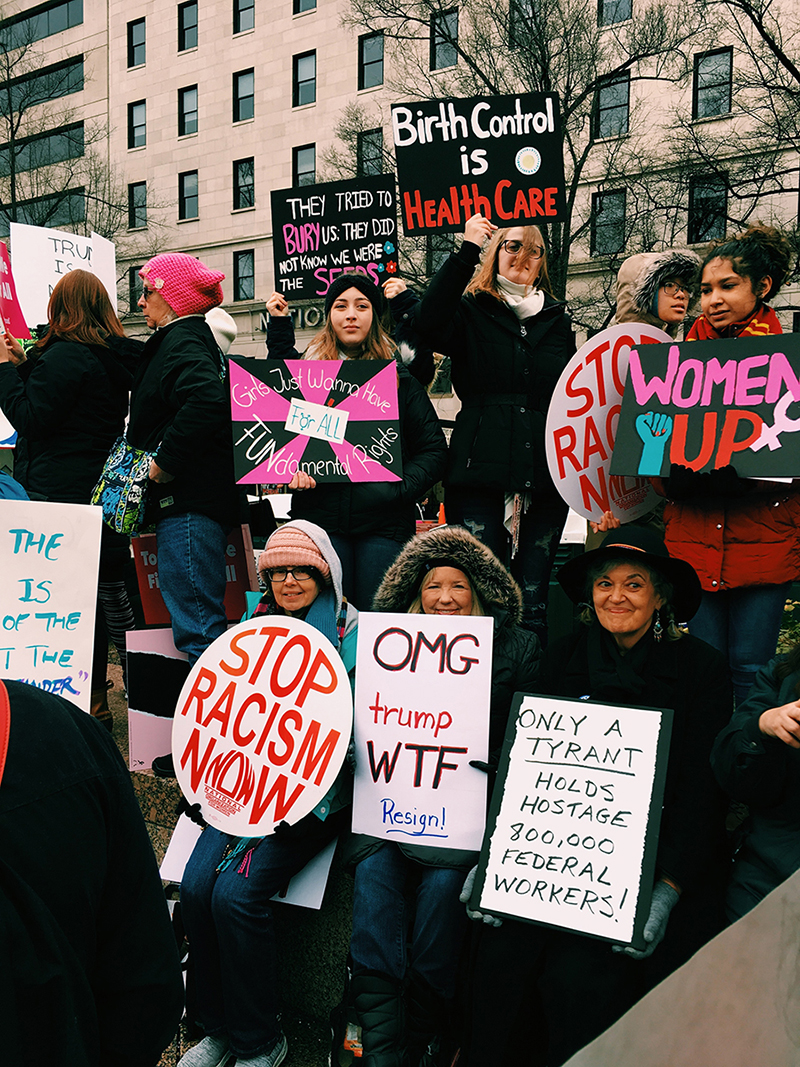Who are the Debbie Downers?

The KILL THE DEBBIE DOWNERS! cast | Photo by Robbie Sweeny
The title is enigmatic, ironic, and provocative. The answer to the question “who are the Debbie Downers?” will be different for each of us. A Debbie Downer rains on your parade.
A Debbie Downer stops you from being who you want to be. If you’re a conservative, then the liberals are Debbie Downers. If you’re a liberal, then the conservatives are Debbie Downers. When we tell ourselves we’re not good enough, or shouldn’t try, we are our own Debbie Downers.
The answer to the question: “But why kill them?” may be found in the reactionary, violent strain of discourse that is unfortunately pervasive in our society today. And in the fact that Debbie Downers view change as an enemy, not an ally.
What will life be like in 100 years?

The KILL THE DEBBIE DOWNERS! cast | Photo by Robbie Sweeny
“Why do this play now?” is always the question with any classic. Our first significant encounter with Chekhov was reading THREE SISTERS in 2005 in anticipation of an exploratory workshop with Berlin-based choreographer Sommer Ulrickson. We all agreed we found the play boring, and didn’t understand why it was such a big deal. Two weeks later we were hooked.
Various artists and audiences around the globe bring themselves to Chekhov, see themselves through the lens of his characters and stories, and together demonstrate the immense theatrical and cultural flexibility Chekhov’s plays have to be in conversation with any culture in any era.
Chekhov seems to speak loudest to people in moments of societal stress, indecision, political ambiguity… when we’re wondering how our current circumstances might impact our future… when we're feeling a struggle between our daily personal concerns and larger world concerns.
—Mark Jackson, DEBBIE DOWNERS Director
We harmonize with what exists.

Women's March | photo by C. Simpson
What rhythms motivate you?
What lyric has helped you to recognize you’re not alone in your weirdness?
The rhythm of inaction versus action interests me. In 2017 I wrote a song for the Women’s March about how society falls if individuals don’t stand up. Each verse used a female character from literature or plays, like Nora and Cassandra.
When we started working on KILL THE DEBBIE DOWNERS, this song kept coming up. We adapted it, opening it up to the themes of this new performance and connecting it to the characters in the show. We wanted it to be open to the range of feelings people have today around the many impacts of patriarchal thinking. It’s an encouraging call to action for anyone on the fence.
Cynthia Hopkins was one of the inspiring artists whose music and lyrics we chose to include in our piece. Listen to more of Cynthia's music on Spotify!
Other music you will discover when you join us are works by David Gates, Kelly Gordon, Mark Jackson, Dean Kay, Dave Malloy, Mike Velarde Jr., and me!
—Beth Wilmurt, DEBBIE DOWNERS Director
Anton Chekhov

Anton Chekhov | photo source: biography.com
Anton Chekhov was born in 1860 in the small town of Taganrog, 600 miles south of Moscow. While in school, he began to show flair for writing – and for acting. Yet in 1879, he moved to Moscow and enrolled in medical school. Chekhov filled his 44 years with numerous careers. While in medical school he earned money from writing short stories. Although he is most familiar to us for his 14 plays he also wrote over 200 short stories in his lifetime.
With his plays, Chekhov asks us: are you up for the challenge to make a change for the better? Do you have the strength? He wrote: ‘you tell me that people cry at my plays….But that was not why I wrote them….All I wanted was to say honestly to people ‘Have a look at yourselves and see how bad and dreary your lives are!’ …if people realize that they will create another and better life for themselves….What is there in this to cry about?’
Historical Context

1905 Russian Revolution | photo source: onthisday.com
Chekhov wrote Three Sisters in 1901. It was a time of growing turmoil in Russia.
Forty years earlier, Tsar Alexander II enacted the Emancipation Manifesto to free the serfs. He told landowners “it is better to begin abolishing serfdom from above than to wait for it to begin abolishing itself from below.” Yet felt he had to placate the land-owners somehow. So he agreed to let them choose which parts of their land they would like to keep. Naturally, the land owners chose the best land for themselves, leaving the serfs with the leftovers. And debt. The now 'former' serfs were required to pay rent for a plot of land that, in many cases, did not provide them enough to survive let alone pay rent. Yet technically, they were free. Not surprisingly, riots ensued. Twenty years later, in 1881, Tsar Alexander II was assassinated.
By the end of the century, there was an ever growing disparity between the rich and the poor. In 1905, thousands of protesters gathered in St. Petersburg outside the Winter Palace. Police and troops opened fire on the protesters and over 1,000 people were killed on what became known as Bloody Sunday. It was the beginning of the 1905 Revolution that resulted in the October Manifesto that guaranteed some civil liberties and lessened the power of the Tsar. Twelve years later Lenin would refer to the 1905 Revolution as the “Great Dress Rehearsal” for the 1917 Russian Revolution.






